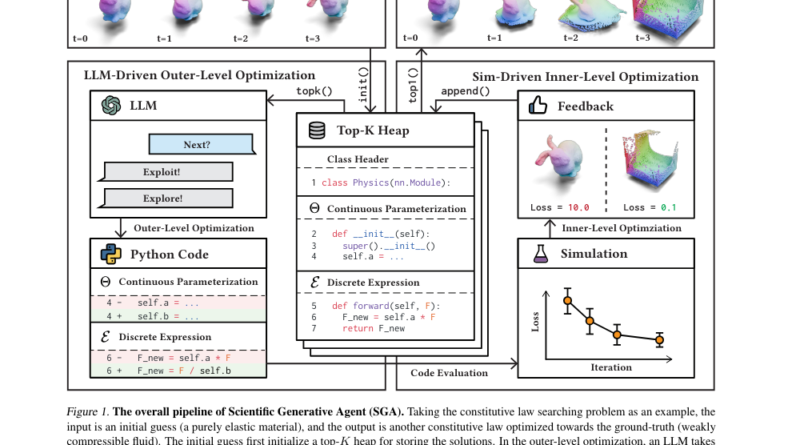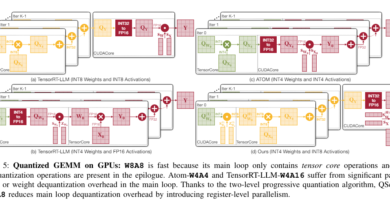SGA Framework: Unified AI and ML for Breakthrough Scientific Discoveries
Leveraging the power of artificial intelligence (AI) and machine learning (ML) has become crucial in accelerating scientific discovery. Researchers are continuously exploring ways to integrate large language models (LLMs) and simulations to enhance hypothesis generation, experimental design, and data analysis in various scientific domains. One such groundbreaking advancement in this field is the Scientific Generative Agent (SGA) framework. This article aims to delve into the intricacies of the SGA framework and its potential implications for cross-disciplinary scientific discovery.
The Need for a Unified Framework
Traditional scientific methods often rely on domain-specific approaches that limit their applicability across different scientific fields. This leads to inefficiencies and hampers innovative discoveries. The scientific community has recognized the need for a comprehensive and adaptable framework that transcends domain boundaries to advance scientific inquiry effectively. The SGA framework offers a unified machine learning approach that addresses this challenge.
Integrating LLMs and Simulations
The SGA framework, developed by researchers from MIT CSAIL, CMU LTI, UMass Amherst, and the MIT-IBM Watson AI Lab, combines the abstract reasoning abilities of LLMs with the computational strengths of simulations. This integration allows for a more comprehensive approach to scientific inquiry. By leveraging LLMs to generate hypotheses and simulations to optimize continuous parameters, the SGA framework enhances the scientific discovery process.
Bilevel Optimization Approach
At the core of the SGA framework lies a novel bilevel optimization approach. In this two-level process, LLMs generate hypotheses at the outer level, while simulations optimize continuous parameters at the inner level. This iterative process refines hypotheses by integrating discrete symbolic variables and continuous parameters, optimizing material properties, and fitting molecular structures.
Performance and Results
The effectiveness of the SGA framework has been demonstrated through various experiments and comparisons with other methods. In the domain of constitutive law discovery, This framework achieved a loss reduction of 50% compared to baselines. This indicates the superior performance of the framework in accurately identifying novel scientific solutions.
In molecular design tasks, this framework successfully optimized molecules with specific quantum properties, achieving significantly lower loss values compared to traditional methods. For example, in the HOMO-LUMO gap task, SGA achieved a loss value of 0.0001, while traditional methods had a loss value of 0.003. These results highlight the accuracy and efficiency of the SGA framework in molecular design tasks.
Potential Applications and Implications
The SGA framework opens up new possibilities for cross-disciplinary scientific discovery. By providing a unified machine learning approach, SGA enables researchers to explore scientific problems from multiple perspectives. This flexibility can lead to innovative solutions that were previously unattainable using traditional domain-specific methods.
Furthermore, the integration of LLMs and simulations in the this framework allows for efficient hypothesis generation and optimization. This streamlines the scientific discovery process, saving valuable time and resources. The potential applications of the this framework span various scientific domains, including physics, chemistry, biology, and materials science.
Future Developments and Challenges
While the SGA framework shows promising results, further research and development are required to unlock its full potential. The framework’s applicability to different scientific domains needs to be explored, along with the integration of additional data sources and external resources for hypothesis generation.
Another challenge lies in optimizing the computational requirements of the SGA framework. As the framework relies on both LLMs and simulations, computational resources can be a limiting factor. Researchers are actively working on optimizing the framework to reduce computational costs without compromising performance.
Conclusion
The Scientific Generative Agent (SGA) framework represents a significant advancement in cross-disciplinary scientific discovery. By integrating large language models (LLMs) and simulations, the SGA framework offers a unified machine learning approach that enhances the efficiency and scope of scientific inquiry. The framework’s bilevel optimization process, combined with its superior performance in identifying accurate solutions, showcases its potential for driving innovative discoveries.
As researchers continue to explore and refine the SGA framework, we can expect further advancements in the field of scientific discovery. The ability to leverage AI and ML techniques to overcome traditional limitations in scientific exploration is a testament to the transformative power of technology in pushing the boundaries of human knowledge.
Check out the Paper. All credit for this research goes to the researchers of this project. Also, don’t forget to follow us on LinkedIn. Do join our active AI community on Discord.
Explore 3600+ latest AI tools at AI Toolhouse 🚀.
If you like our work, you will love our Newsletter 📰




